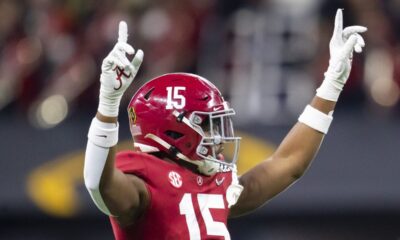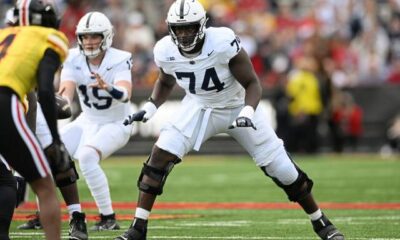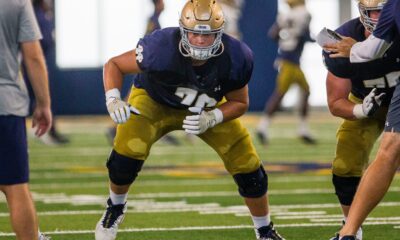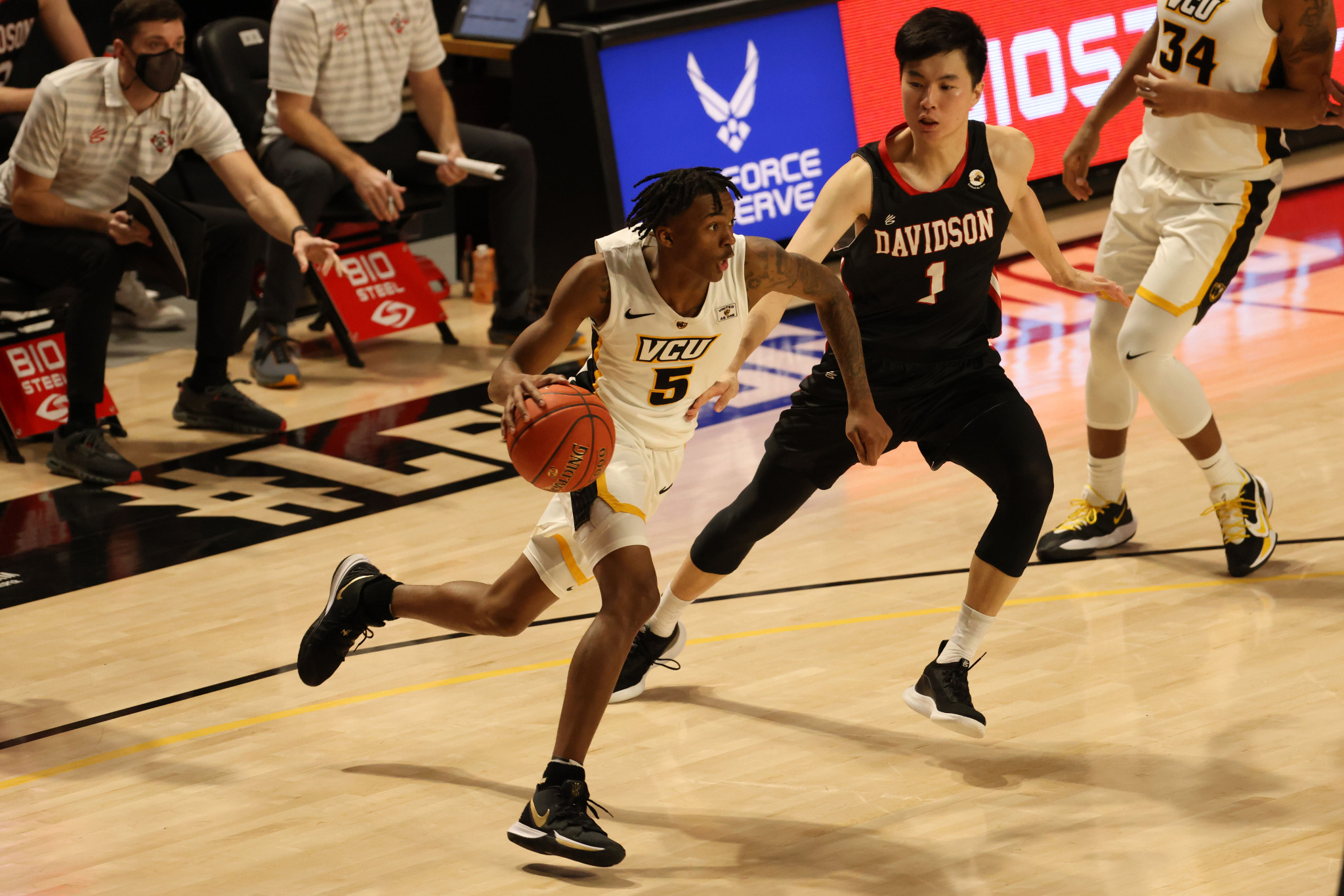
The NBA Draft is coming fast, and that’s always an exciting time for the NBA. The next LeBron James’ or Zion Williamsons’ may be starting their careers on July 29th. Bad teams look for their saviors, while good teams look to continue their reign, or set up for a seamless transition. One team that could be going many different ways is the Philadelphia 76ers. Though they finished with the best record in the Eastern Conference, a miserable bounce out in the second round raised questions as to if this roster is one that could really win a championship. Ben Simmons’ name is now firmly on the trade block, and it’s likely a deal would need to be done before the draft, especially if it involves multiple teams and one of those teams are looking to deal a pick or two back.
Not only that, but the Sixers are picking 28th, third to last, which is not really where you want to be. Still, the 76ers have gotten a lot of value out of their previous two later picks, with All-Defense 2nd Team Matisse Thybulle (also representing Australia in the Olympics) taken at 20 and a bright young guard in Tyrese Maxey who was taken at 21. This is another step down from those two picks, but a decent draft record is there. Daryl Morey was in charge for the Maxey pick, and guys like Elton Brand are still around from the Thybulle pick, which should give Sixers fans hope for the draft.
Of course, given the pick and the Ben Simmons situation, there’s a huge chance this pick is not made by the 76ers, but if it does, the 76ers could go in a couple different ways.
What Do the 76ers Need?
For a team that finished as a one seed, there are a surprisingly large amount of needs that the 76ers can target, and we’ll get to the prospects soon. The biggest one is the need for a capable ball-handler. This is regardless of whether Simmons is dealt or not. If he is traded, they obviously need a lead point guard that can make plays for others. Besides Simmons, their current options are George Hill, who moves the ball alright but doesn’t set teammates up well, Tyrese Maxey, who’s much more of a scorer than passer right now, and Shake Milton, who is similar to Maxey. They don’t have any natural pass first guys on the team without Simmons. Even if Simmons is retained, the lack of someone else that can create shots for others besides Simmons was on full display whenever he was out. The secondary unit of Tobias Harris plus bench guys had no playmakers, and it often just fell to one of Harris, Milton or Maxey (usually Harris) to iso one on one and take a contested shot. That’s not winning basketball.
The second biggest need is for someone that can create their own shot. No matter how slick your ball movement and passing is, deep in the playoffs there will always be critical moments where you simply need to beat the guy in front of you and score. Currently, only Joel Embiid does this at an elite level on the 76ers, and when Tobias Harris is on he can do it too. That’s about it. We saw Seth Curry do alright versus the Hawks, and Maxey and Milton are on their way to developing this skill, but both are rather one dimensional. If Harris isn’t playing well, and Embiid is gassed or injured (or getting triple teamed), the 76ers get stuck far too often, going on extended cold streaks time after time. This is a large part why they blew so many leads. Getting a true three level scoring guard that can do it by themselves when required would be a massive boon to the 76ers offense, and help them when things get slow.
Finally, a backup forward, especially one with range, would not be remiss. During the playoffs, Harris essentially managed the four position by himself. Embiid and Dwight Howard can’t play together, Simmons doesn’t have range and doesn’t play the four despite his size, and Mike Scott should not be seeing playoff minutes in any circumstance. That left them with Furkan Korkmaz (kind of), who plays much more like a guard than a forward, and he got moved into the starting lineup when Danny Green went down anyways. Paul Reed is a player many have high hopes for, but the chances of him developing a three point shot are slim to none, so he doesn’t help the spacing issues at all. Even if Simmons is dealt, a bench unit of Shake Milton, Tyrese Maxey, Matisse Thybulle, Paul Reed and Dwight Howard has awful spacing. That’s three average at best three point shooters and two nonfactors from deep. Adding any range should be fairly helpful, but the other backup positions are rather entrenched beside the four.
Potential Candidates
Picking at 28 means there’s no magic bullet prospect out there that can fulfill all these needs by himself. If there was, he’d be a lottery pick. That being said, here are a few names that might be available at 28.
Nah’Shon Hyland, VCU, PG/SG, 6-3 170

Jay LaPrete/AP
The most common pick for the 76ers in mock drafts, Hyland checks the second need in spades. He’s an elite scorer, averaging 19.3 points per game last year as the focal point of the offense (and every defense they faced). Overall, Hyland shot 44.7/37.1/86.2 splits as the primary ball handler. 37.1 isn’t amazing, but he was taking most of his shots off the bounce, and the 7.8 three-point attempts per game is encouraging. Hyland definitely isn’t a shy shooter which the 76ers could use. The best part of his splits are his fantastic free throw percentage, which time after time proves to be the greatest predictor of shooting ability in the NBA. He’s got a quick release and unlimited range, and he’s got a nice handle to go along with long arms that help his finishing inside.
Hyland doesn’t help the 76ers playmaking problem however. Despite having the ball in his hands most of the time, he had just 2.1 assists to 3.1 turnovers. Hyland isn’t going to wow as a passer unless something massive changes. He’s also not very big. 6’3 is an acceptable size for a point guard, but it’s not great for a shooting guard which he profiles better. Put next to Tyrese Maxey, who’s 6’2”, and the future backcourt for the 76ers is tiny. Both of these guys have flashed defensively on the turnovers side of things, but it’s not going to be hard for teams to really bully them with size. Unless Maxey or Hyland develop their playmaking in a big way, they have slightly redundant skills as smaller, score first guards. On one hand, that can be Damian Lillard and C.J. McCollum. On the other, you could end up with a Darius Garland and Collin Sexton situation, which isn’t even that bad but it’s questionable how far that type of backcourt can go.
Overall, Hyland would be a great pick if he falls to the 76ers. He’s got all the makings of an elite scorer that can do it all himself, which is sorely needed, and at the very least will provide great three-point shooting. Defensively, while he is smaller his wingspan of +6 inches is elite and he’s got good lateral agility which gives him a lot of promise there. He isn’t a leaper, and he is very skinny right now, but Hyland has a decent floor as a 3-and-D candidate and a high ceiling of a Jordan Clarkson type scorer off the bench. It’s not a perfect fit, but it’s good enough at 28, enough that there are doubts Hyland even falls that far.
Ayo Dosunmu, Illinois, PG/SG. 6-5 200
/cdn.vox-cdn.com/uploads/chorus_image/image/69085545/usa_today_15769582.0.jpg)
Kirby Lee/USA TODAY Sports
Dosunmu is another hybrid guard, but one slightly more suited to playmaking than Hyland. Dosunmu averaged a great 20.1/6.3/5.3 per game, and had great splits of 51.1/39.0/78.3. He’s not the shooter Hyland is, and his shooting form is one of those “it works, but it doesn’t look right” types that give front offices pause. He only took 2.9 threes per game, but his percentages are good enough that he has hope there.
Just like Hyland, Dosunmu’s biggest strength is his ability to score off the dribble, and his percentages were elite, especially that 51.1% from the field. That’s a fantastic number for a ball-handling guard. He doesn’t have an amazing handle, but he’s got enough moves to make it to the basket and the touch to finish there consistently. He’s a willing passer, but doesn’t have a natural eye for assisting. His 5.3 assists to 3.3 turnovers is better than Hyland, but it’s still not good. He does rebound at a good level for a guard, and showed an ability to run the PnR game which the 76ers lacked.
One thing he does have solidly over Hyland is size. While they both have long arms, Dosunmu is an inch taller and much heavier, which makes him a more natural fit with Maxey defensively, and his theoretical defensive potential should be quite high. Overall, Dosunmu might fit better with Maxey, with a bigger defensive profile and slightly better passing than Hyland, but Hyland’s elite shooting skills is something that the current 76ers bench lacks. They both should fill that scoring potential off the bench, but Dosunmu is on the older side for an NBA draftee at 21.
Jason Preston, Ohio, PG, 6-4, 178
/cloudfront-us-east-1.images.arcpublishing.com/gray/36OWDBWHF5B3LKUDLFMHWQYGG4.jpg)
Doug McSchooler/AP
Preston is not the flashiest prospect, but he’s got a set of skills that make him a fairly unique option this late in the first round. While many wouldn’t consider him a first round talent (pre-draft rankings have him anywhere from 29th-41st) he’s a pass first ball handler unlike most of the guys around him. Dosunmu and Hyland present two of many score first guards that are available in this range. Tre Mann, Quentin Grimes and Cameron Thomas also all profile as capable score-off-the-dribble guards that won’t really help you at all with moving the ball around.
Preston is on the other end of the guard spectrum. While he can still score (averaging 15.7 points per game) it’s not guaranteed to transfer well to the NBA. He’s not an amazing athlete, and while he did shoot 51.4% from the floor and 39.0% from three on 4.1 attempts per game, he only shot 59.6% from the free throw line, which is a major red flag. He doesn’t get to the line much either, and his shooting form has been described as unorthodox.
Where Preston makes his money though, different from the other guards, is his passing. His 7.3 assists per game was sixth in the nation, and all the ingredients to be an elite playmaker are there. He’s more than willing to distribute, he’s got basketball IQ and vision that are nearly impossible to teach, and he’s got nice touch to his passes, able to float it when needed or gun it to outside shooters cross court. He still had a not ideal three turnovers per game last season, but that’s a lot more palatable when he’s dishing out twice as many assists.
Defensively, Preston has decent height and length (6-4 and 6-8 respectively) to not be a liability, and his BBall IQ extends to that end as well. He’s also going to give good effort, and a lot of defense in the NBA is effort and length. That also shows in his rebounding, where he pulled down 7.3 boards per game. He’s not amazingly quick or athletic though, which puts a ceiling on how good he can be on that end.
The athleticism is a concern, as is his free throw shooting, which really puts into question how effective he’ll be as a scorer, but he’s well suited to be a primary ball handler next to Maxey or Milton and his three-point percentage at least gives hope he can do that. If he can become similar to Lonzo Ball (good passer, shoots threes efficiently and plays good defense without any other offensive game) that’s not bad at all, and fills the need for better ball handling and passing, with or without Simmons.
J.T Thor, Auburn, PF, 6-10, 205
/cdn.vox-cdn.com/uploads/chorus_image/image/69576462/usa_today_15239243.0.jpg)
Kim Klement/USA TODAY Sports
Thor is definitely the least ready to help the 76ers right away, and might be the most raw player in the entire draft. As is usually the case with these types of players though, his potential is quite high, and he fits that third need that no one else even comes close to filling. There aren’t many bigs in this draft, especially late, and especially not ones that could theoretically develop a shot. Thor checks those boxes. He only shot 29.7 percent from three on 2.7 attempts per game, but that isn’t TERRIBLE for a guy his size, and he shot a much better 74.1% from the line. His form also looks quite clean. There’s definitely hope for him shooting-wise, and getting another big that can shoot to either pair with Embiid or spell him is very much needed.
Beyond the hopeful offense, right now Thor projects as an elite defender. He’s got a huge 7-3 wingspan to go along with his 6-10 height, he’s a great athlete and moves his feet well enough to be switchable. His help defense in protecting the rim should be a no-doubter, and he seems coordinated enough that you can’t abuse him outside the paint, which is an increasingly necessary skill in today’s NBA.
Overall, Thor is a good athlete, with great size and a jumper that has a decent chance to develop into a real weapon. He’s also just 18 years old, (will be 19 when the season starts) and therefore should have a ton of room to keep developing and growing. It’s not likely for the 76ers to go for Thor as he is still probably a few years away, but if he can grow into a Chris Boucher type player quickly to back up Tobias Harris and provide good spacing and help defense, that’s very valuable. It’s not something anyone else offers in the draft either. In a perfect world, the 76ers don’t need to win ABSOLUTELY right now. Embiid is only 27 right now, Harris is a little older at 29, and many of the core members of the 76ers (Simmons, Thybulle, Milton, Korkmaz, Maxey) are all under 25. Embiid’s health problem is a looming concern, but age wise this team is built to compete for a few years, and if Thor can develop a little faster than anticipated he could be a key contributing member for this team in their championship window.
The 28th Pick
The 76ers have needs, and they are needs that can be filled in the draft. Luckily for them, this draft is filled with scoring combo guards, so if that’s the route they choose to go they should be fairly spoiled for choice. Getting an elite ball handler or a stretch four might be a little harder, but options exist. Of course, more than likely this is all moot if the 76ers end up doing a blockbuster deal and send Ben Simmons and this pick away, but it’s still interesting to know what’s out there. The 76ers will need to make magic happen again late in the draft, and there are a number of very intriguing prospects that could make the Sixers three for three.
Related

Featured Articles
-
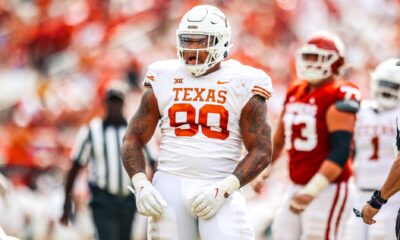

College Football
/ 6 hours agoNFL Draft 2024 Scouting Report: Byron Murphy II, DT, Texas
Byron Murphy II, DT, Texas Height: 6’0 ½” Weight: 297 Arm Length: 32...
-
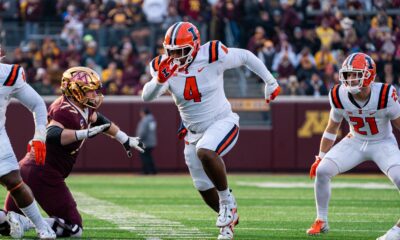

College Football
/ 7 hours agoNFL Draft 2024 Scouting Report: Jer’Zhan Newton, DT, Illinois
Jer’Zhan Newton, DT, Illinois Height: 6’2” Weight: 304 Arm Length: 32 ⅜ ...
-
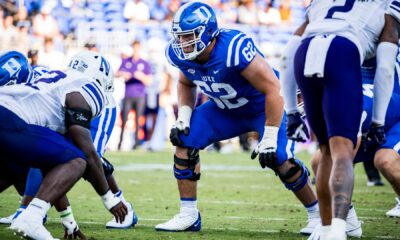

College Football
/ 7 hours agoNFL Draft 2024 Scouting Report: Graham Barton, OT, Duke
Graham Barton, OT, Duke Height: 6’5” Weight: 313 Arm Length: 32 ⅞ ...
-
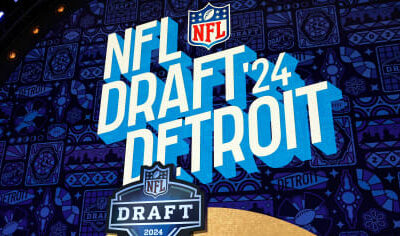

NFL
/ 8 hours agoRyan Stern’s 2024 NFL Mock Draft
Merry Christmas everyone, it’s Draft Day! There really is nothing quite like the NFL...
By Ryan Stern
